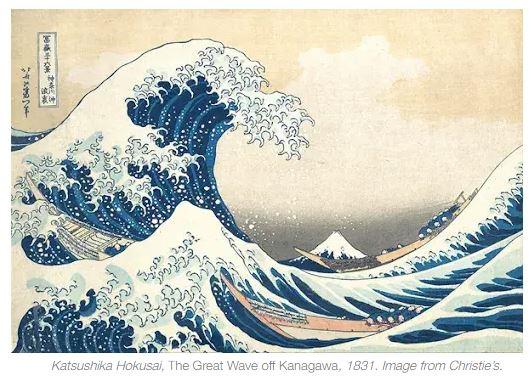Ukiyo-e, a genre of traditional Japanese art, holds a unique place in the world of artistic expression. The term "Ukiyo" translates to "floating world," capturing the essence of fleeting moments in life. Ukiyo-e art encompasses a diverse range of woodblock prints that flourished during the Edo period (17th to 19th century) in Japan. In this blog, we will delve into the meaning of Ukiyo, explore the captivating world of Ukiyo-e prints, and understand the cultural significance of this remarkable art form.
Ukiyo meaning of the Floating World
The term "Ukiyo" is derived from Buddhist philosophy, where it originally referred to the impermanence and transience of life. However, during the Edo period, it took on a more secular meaning, representing the hedonistic pleasures of urban life. The floating world referred to the entertainment districts, teahouses, theaters, and brothels where people sought escape from the rigid social hierarchy of feudal Japan. Ukiyo celebrated the ephemeral joys of life, capturing fleeting moments and emphasizing the impermanence of human existence.
Ukiyo-e Art: The Beauty of Woodblock Prints
Ukiyo-e art became synonymous with woodblock prints, a form of mass-produced art that enabled widespread distribution and popularity. The process of creating Ukiyo-e prints involved multiple skilled artisans, including the artist, woodblock carvers, and printers. The artist would first create a design, and then the woodblock carver would meticulously carve the design onto a wooden block. Once the block was prepared, it was inked and pressed onto paper, resulting in a vibrant and detailed print.
The Captivating World of Ukiyo-e Prints
Ukiyo-e prints captured a wide array of subjects, ranging from landscapes and nature scenes to portraits of beautiful women, kabuki actors, and legendary warriors. One of the most famous Ukiyo-e artists was Katsushika Hokusai, known for his iconic print series, "Thirty-Six Views of Mount Fuji," which featured the iconic image of "The Great Wave off Kanagawa."
Another prominent artist was Kitagawa Utamaro, celebrated for his elegant and sensuous depictions of women. These prints, known as "bijin-ga" or pictures of beautiful women, epitomized the aesthetic and romantic allure of Ukiyo-e art.
The Cultural Significance of Ukiyo-e
Ukiyo-e prints played a significant role in shaping Japanese culture during the Edo period. These prints were affordable, making them accessible to a broad audience, including the emerging merchant class. They not only served as decorative elements but also acted as a form of popular entertainment and a means of spreading information about current events, theater productions, and famous personalities.
Moreover, Ukiyo e prints influenced Western art and played a crucial role in the development of Impressionism in Europe during the 19th century. Artists like Vincent van Gogh and Claude Monet were inspired by the bold colors, unique compositions, and the concept of capturing fleeting moments that Ukiyo-e art exemplified.
Ukiyo-e art, with its deep-rooted meaning of the "floating world," continues to captivate art enthusiasts and historians worldwide. Through its woodblock prints, Ukiyo-e immortalized moments of joy, beauty, and cultural significance during the vibrant Edo period in Japan. Today, these prints serve as a window into a bygone era, offering us insights into the daily lives, values, and aspirations of the people of old Japan. As we cherish the legacy of Ukiyo-e, let us celebrate the beauty of this art form, recognizing its lasting impact on the world of art and its ability to transcend time, cultures, and borders.


